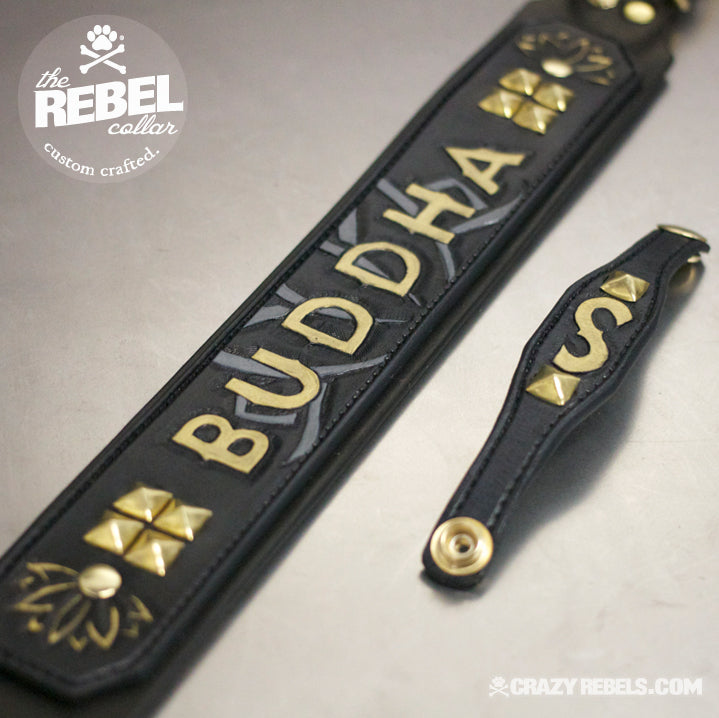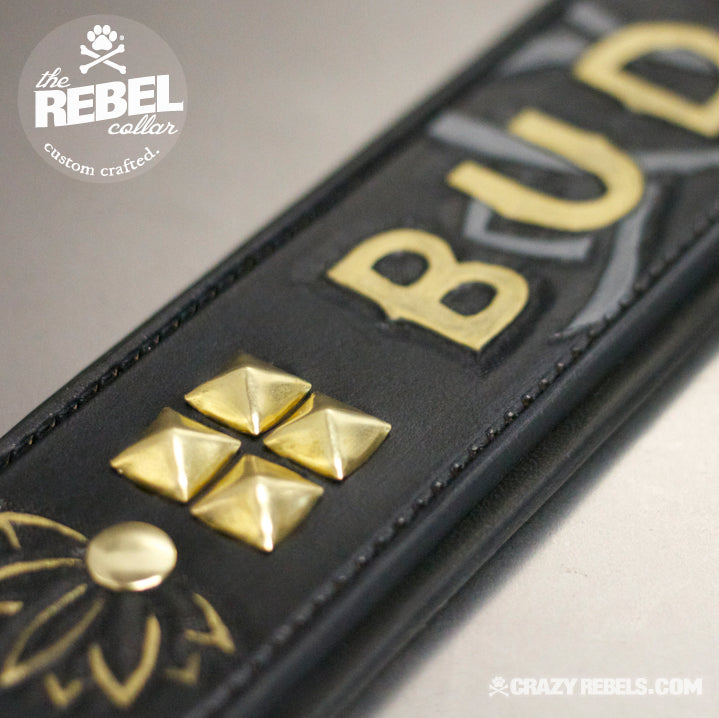A Contest With Cutie and the Beast

(CONTEST is closed. Check out the Runners Up.)
Crazy Rebels is all about making dogs and their humans happy. We like to think dogs walk a little prouder when they're wearing a Crazy Rebels collar, and we love how excited people get when their rebel gear arrives in the mail. Naturally we love to craft matching leather goods for people to match their pups.
Cutie and The Beast are the most adorable dog/ human duo who fill their followers Instagram feed with daily smiles and sunshine. This three-year-old girl and her one-year-old best friend Doberman portray the absolute truest love between a human and a dog so we could think of no better pair to launch our matching custom carved and painted Rebel Collar and Bracelet sets. We've teamed up with Cutie and her Beast to offer you an awesome contest to win your very own custom crafted collar and matching bracelet.
How to enter:
1.) Follow @cutieandthebeast and @crazyrebels on Instagram.
2.) Post a picture of you or your child with your dog on Instagram and hashtag it with #cutieandyourbeast. You can enter as many different pictures as you like. All pictures entered must be posted between 8/22/14 and 8/29/14, 11:59 p.m. PST.
3.) For an extra entry you may repost the picture above to your Instagram.
Contest ends 8/29/14 and is open to all breeds, all over the world. Pictures will be judged on originality, creativity, and clarity so show us what you've got!
What you'll win:
The winning entry will receive a custom Rebel collar and matching bracelet set from Crazy Rebels. The Rebel Collar was created to help people design their dog's dream collar. From conceptualization to completion, you'll work one-on-one with our leather crafter to come up with an insanely one-of-a-kind collar for your dog and a matching bracelet for you (or your kiddo). The Rebel Collar set is hand carved and painted; your masterpiece, custom crafted with excellence by Crazy Rebels.










